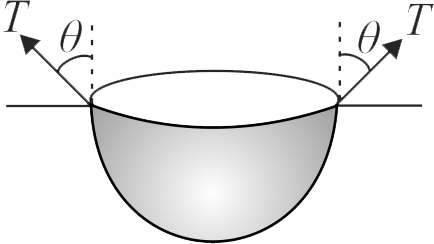361251 A bowl whose bottom has round holes of diameter \(1\,mm\) is filled with water. Assuming that surface tension acts only at holes, find the maximum height up to which water can be filled in the vessel without leakage. (Given, surface tension of water \({=75 \times 10^{-3} {Nm}^{-1}, g=10 {~ms}^{-2}}\) and density of water \({=1 {~g} / {cm}^{3}}\).
361251 A bowl whose bottom has round holes of diameter \(1\,mm\) is filled with water. Assuming that surface tension acts only at holes, find the maximum height up to which water can be filled in the vessel without leakage. (Given, surface tension of water \({=75 \times 10^{-3} {Nm}^{-1}, g=10 {~ms}^{-2}}\) and density of water \({=1 {~g} / {cm}^{3}}\).
361251 A bowl whose bottom has round holes of diameter \(1\,mm\) is filled with water. Assuming that surface tension acts only at holes, find the maximum height up to which water can be filled in the vessel without leakage. (Given, surface tension of water \({=75 \times 10^{-3} {Nm}^{-1}, g=10 {~ms}^{-2}}\) and density of water \({=1 {~g} / {cm}^{3}}\).
361251 A bowl whose bottom has round holes of diameter \(1\,mm\) is filled with water. Assuming that surface tension acts only at holes, find the maximum height up to which water can be filled in the vessel without leakage. (Given, surface tension of water \({=75 \times 10^{-3} {Nm}^{-1}, g=10 {~ms}^{-2}}\) and density of water \({=1 {~g} / {cm}^{3}}\).

